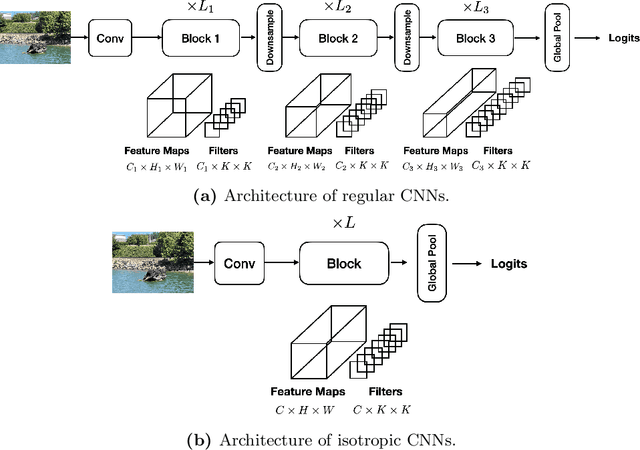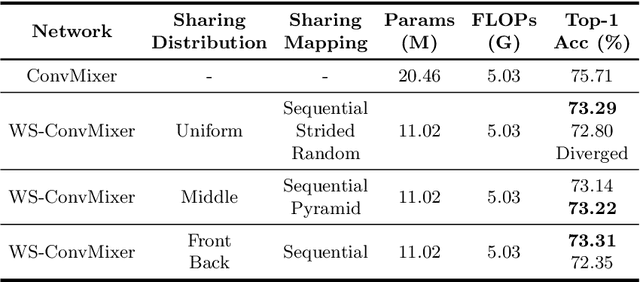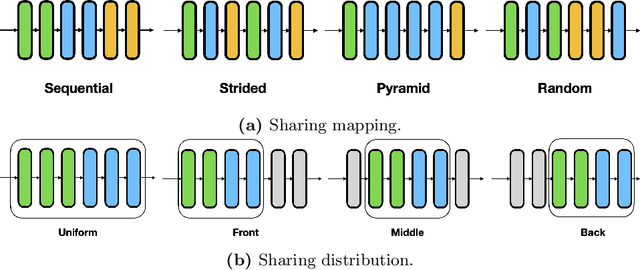SPIN: An Empirical Evaluation on Sharing Parameters of Isotropic Networks
Paper and Code
Jul 21, 2022



Recent isotropic networks, such as ConvMixer and vision transformers, have found significant success across visual recognition tasks, matching or outperforming non-isotropic convolutional neural networks (CNNs). Isotropic architectures are particularly well-suited to cross-layer weight sharing, an effective neural network compression technique. In this paper, we perform an empirical evaluation on methods for sharing parameters in isotropic networks (SPIN). We present a framework to formalize major weight sharing design decisions and perform a comprehensive empirical evaluation of this design space. Guided by our experimental results, we propose a weight sharing strategy to generate a family of models with better overall efficiency, in terms of FLOPs and parameters versus accuracy, compared to traditional scaling methods alone, for example compressing ConvMixer by 1.9x while improving accuracy on ImageNet. Finally, we perform a qualitative study to further understand the behavior of weight sharing in isotropic architectures. The code is available at https://github.com/apple/ml-spin.
 Add to Chrome
Add to Chrome Add to Firefox
Add to Firefox Add to Edge
Add to Edge